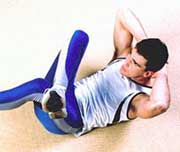Women who understand their bodies are also aware of what are commonly called stretch marks. Stretch marks are the often purplish or sometimes whitish, occasionally furrowed lines that develop after fast gaining weight and losing it such as in pregnancy, obesity and at times puberty. Even bodybuilders can have stretch marks. They appear when the true skin breaks and forms scars tissue as a way of compensating for the break. The visible scar tissue is the stretch mark we see. They manifest commonly in the upper arms, breast, hips, thighs, lower back and abdomen.
The body’s skin consists of three layers: the epidermis or top layer, that part that does not hurt even when pricked or cut; the dermis or true skin where the hair follicles, venal capillaries and nerves end, and the subcutaneous layer, the fatty tissue next to the muscle itself. The skin contains collagen and elastin, two proteins that enable the stretch and contract yet retain its shape, at least almost all the time. When it is overstretched and tears, the skin produces scar cells to repair the torn portion. The scar tissues stay even if the skin stretch has returned to normal conditions.
Being unsightly, most women want to remove the marks, and resort to many methods to do it. The list of methods may include warm water baths, body massage with oils, moisturizers, butters and creams, and cosmetic surgery, an option for the rich. Maybe discussing some methods might be helpful.
Creams, oils and moisturizers
A lot of these ‘powerful solutions’ are available at neighborhood drugstores and pharmacies. They contain mostly Vitamin E oil, jojoba oil, shea butter or cocoa butter, and are massaged on the affectted skin two times or more day for a definite number of days, according to manufacturer specifications. Though most of them appear to be successful, such solutions only moisturize the skin to camouflage the marks and make them less visible. They cannot mend the skin to its natural state after the damage has been done. But they do make the skin more supple and appealing.
Food intake and working out
As applicable to almost every physical problem, being particular with food and regular exercise will help. Drinking plenty of water to rehydrate is the first step. Foods heavy in zinc like nuts and fish; in Vitamins C, E and A such as citrus, milk and carrots, and those of protein as meat and poultry will help rejuvenate the skin. The skin’s tome is renewed by regular exercise. Avoid coffee and other diuretics because they tend to dry out the skin.
Cosmetic surgery
Some people who can afford them prefer dermabrasion as remedy. Dermabrasion is performed by a cosmetic surgeon who freezes the skin then ‘sands’ it using a high-speed abrading wheel that peel off the skin’s outer layer. The replacing skin should look less blemished afterwards. Chemical peeling is another method. In this method which is also termed chemexfoliation, a chemical is applied to blister the skin, which is later peeled off as if scalded. The new growth of skin will then appear smother or less unsightly. However, both procedures are expensive and fraught with risks, so only those who can afford them -and probable subsequent treatments--- go for them.
The third method is laser surgery. While it may sound serious, laser surgery nowadays has been simplified by technology. In this method, an extremely concentrated ray of light traces the marks to remove very thin layers of skin, including the scar tissue itself. The skin heals very quickly after wards, covering the gaps left by the burned-off scar tissue. The area will then appear less unsightly than previously. Though the procedure is easy and simple, several sessions are required, and some risks are also involved.
Saturday, January 9, 2010
Subscribe to:
Post Comments (Atom)


No comments:
Post a Comment